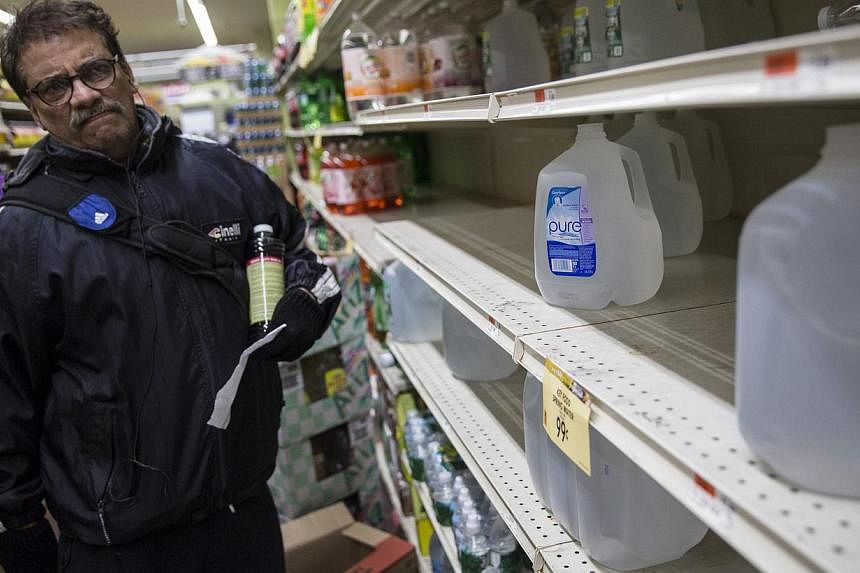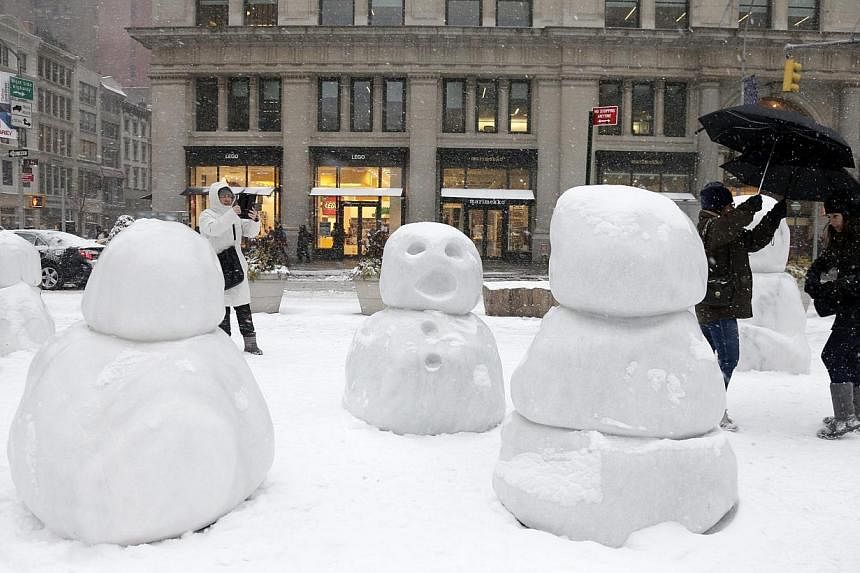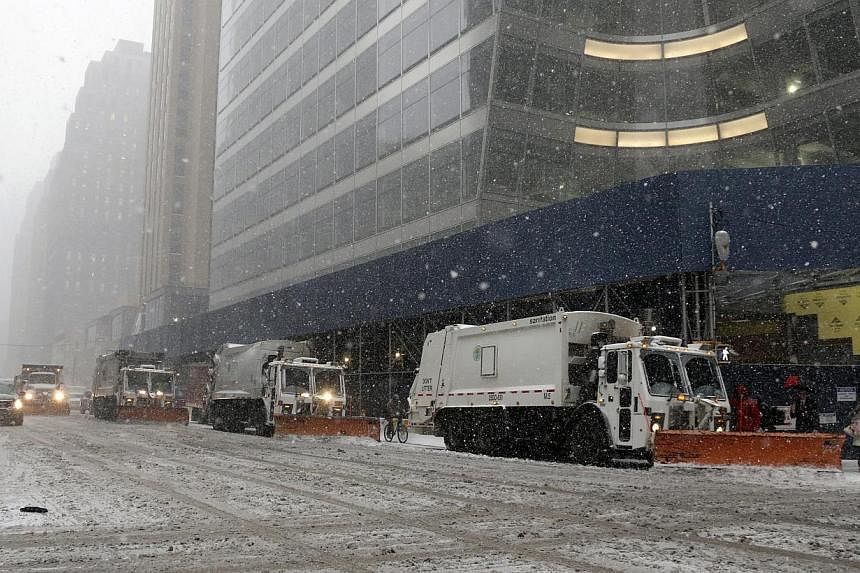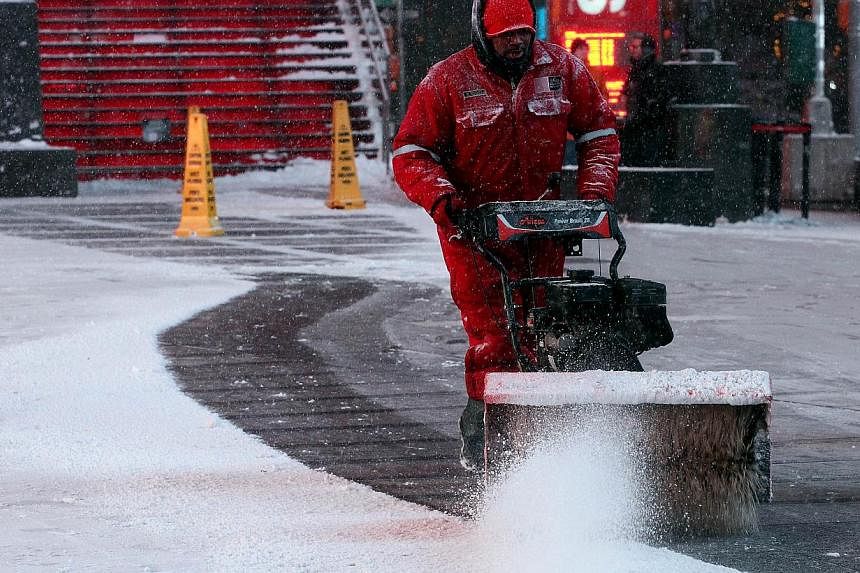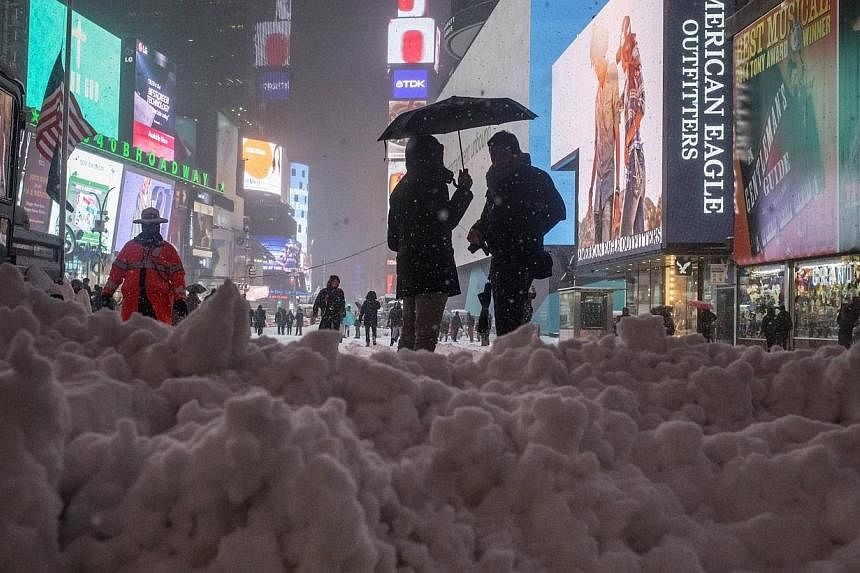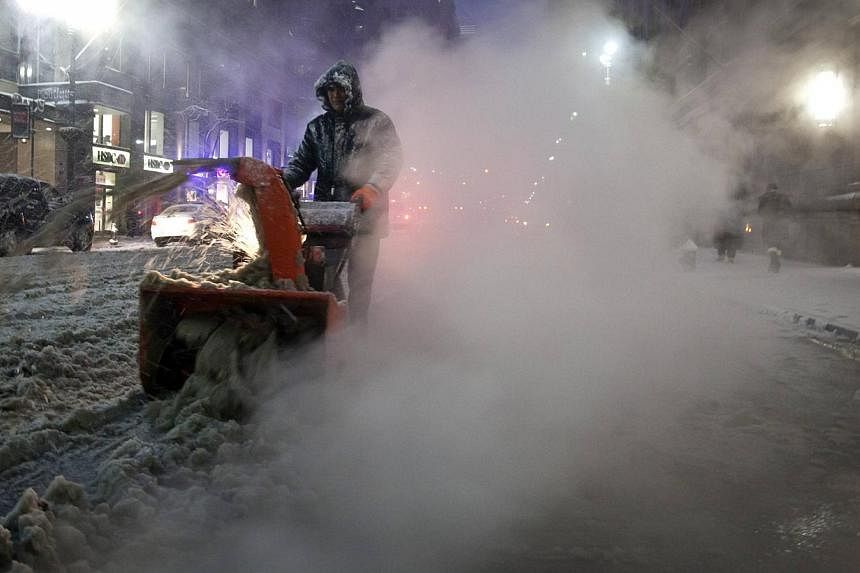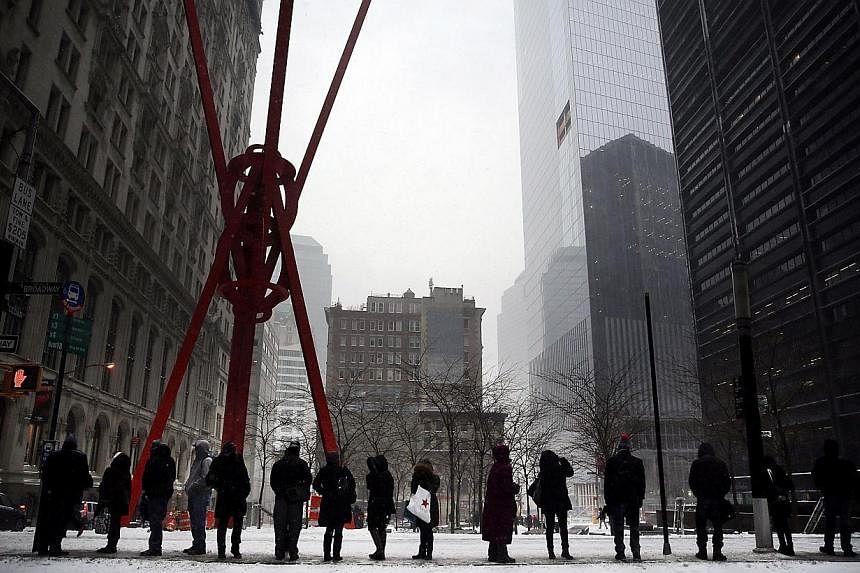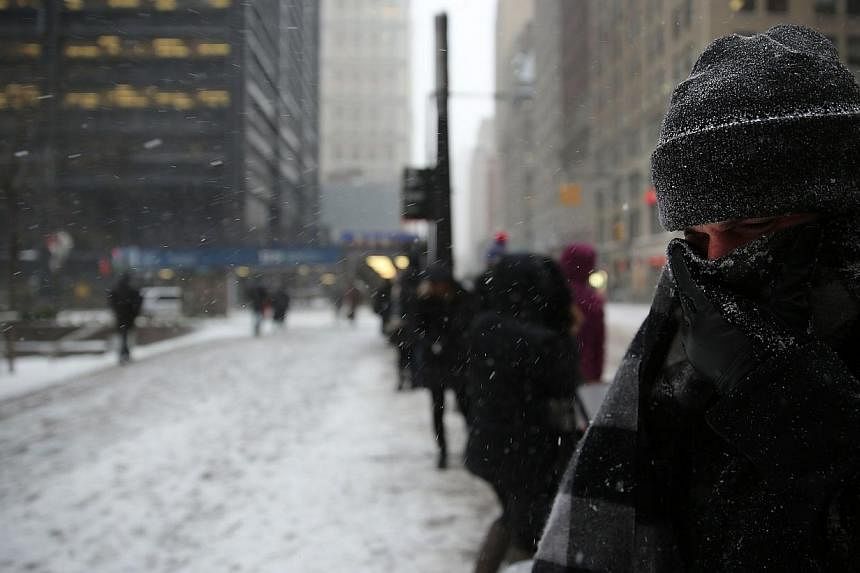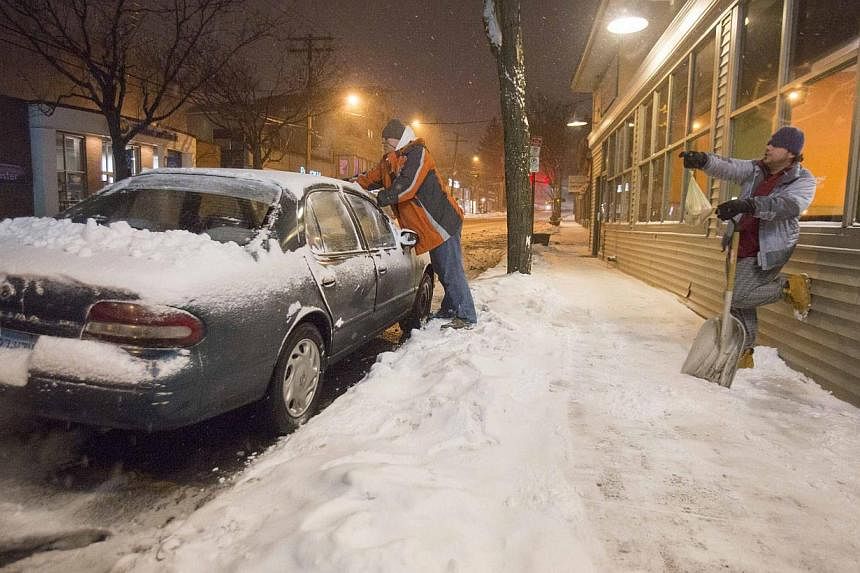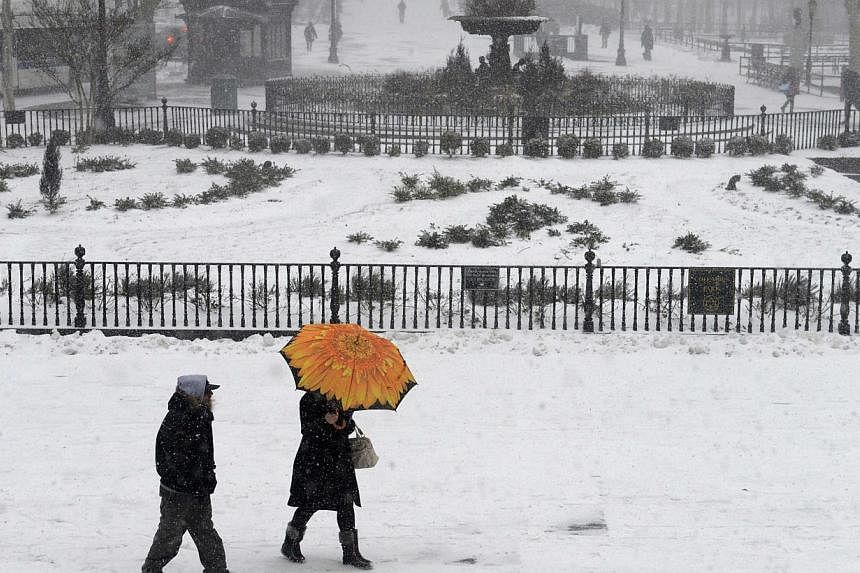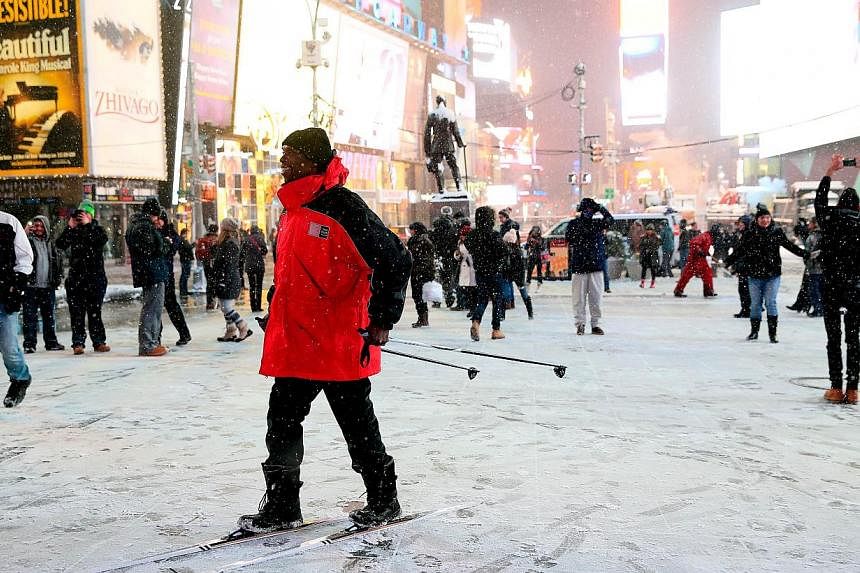Public transport halted, Broadway shows closed, flights cancelled and road travel made a criminal offence, all of these a result of a mega winter storm hitting New York and other parts of the northeastern United States.
The historic blizzard, which hit the city on Jan 27, has affected tens of millions of people and is expected to dump up to about a metre of snow in parts of the northeast, with the worst affected areas likely to be New England, particularly Connecticut and Massachusetts.
In an interview with Thinkprogress.org, Dr Kevin Trenberth, former head of the Climate Analysis Section at the National Center for Atmospheric Research, said that "human-induced climate change" played a big part in causing the storm.
Here are some factors that could have caused or might worsen the blizzard.
1. Warmer temperatures means more rain/snow

SOURCE: NATIONAL OCEANIC AND ATMOSPHERIC ADMINISTRATION
Commenting on the role climate change has on this latest storm, Dr Trenberth explained that during winter it is cold over the continent but warm over the oceans. The increase in the different temperatures results in an increase in water vapour in the air.
"All weather events are affected by climate change because the environment in which they occur is warmer and moister than it used to be." said Dr Trenberth.
In its 2014 update on climate science, the UK Met Office said, "Basic physics tells us that a warmer atmosphere is able to hold more moisture - at a rate of approximately 7 per cent increase per degree warming. This is expected to lead to similar percentage increases in heavy rainfall."
So in effect, having more water vapour in the air means that when it is cold enough to snow, that is when temperatures are 0 degrees Celcius and below, more snow falls and snowstorms are more intense.
2. Bombogenesis
The blizzard is expected to dump about a metre of snow in parts of the north-east. This amount of snow along with near-hurricane force winds could be because of a meteorological phenomenon called Bombogenesis.
Bombogenesis is a rapid drop in barometric pressure of at least 24 millibars at the most intense part of a storm in 24 hours.
Basically, when cold air (say from inland) mixes with warm air (found over a warmer ocean), the mixing air causes the drop in pressure. The lower pressure then causes cold air to rush towards the ground and warmer air to rise.
This means a rapid increase in the intensity of a storm, high winds and huge ocean waves.

SOURCE: NATIONAL OCEANIC AND ATMOSPHERIC ADMINISTRATION
3. Climate change is altering jet streams and weather patterns
In a report linking global warming to extreme weather, founding editor of Climate Progress Joe Romm said: "Increasingly, scientists have explained that climate change is altering the jet stream and weather patterns in ways that can cause storm systems to slow down or get stuck, thereby giving them more time to dump heavy precipitation."
Jet streams are fast flowing, narrow air currents which move weather systems around the globe. They play a key role in the weather by steering storms and also help determine where storms form.
Global warming is increasingly being tied to the weakening of jet streams. This change explains the increase of extreme weather events.
